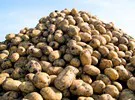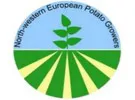 During its last meeting prior to Potato Europe 2022, the North-Western European Potato Growers (NEPG) estimates that global potato production in the NEPG zone (EU-04) will be down by 7 to 11 %.
During its last meeting prior to Potato Europe 2022, the North-Western European Potato Growers (NEPG) estimates that global potato production in the NEPG zone (EU-04) will be down by 7 to 11 %.
Probable final hectarage of the NEPG zone (EU-04) in 2022 will be 510.938 ha, a global rise of 3,2% in comparison with last year, and a rise of 1,7 % compared to the 5 year average. Dutch growers planted 7,7 % ha more than in 2021.
Depending on final growth gains, global production should vary between 20 and 21 million tons. After a long and unusually very dry and hot summer, global potato production has been reduced throughout the NEPG zone. Situations vary between countries and regions, with Belgian and French farmers most affected (around 20% less for the Belgians)), and Dutch ones very much less, particularly those North of the great rivers where more rainfall was recorded. Some farmers will not be able to deliver their expected contracts due to low yields.
Summer 2022 will be recorded as a difficult and a very costly year, either because yields per ha are low, but also because energy and irrigation costs were much higher.
The heat waves we had throughout the summer will have caused some quality and storage issues. There are reports of not only too high underwater weights and not enough tuber length, but more worrisome also of the lifting of dormancy. Even if rain comes to better soil situations and harvesting conditions, bruising could be a problem while lifting. Early germination in storages will also render upcoming storage season difficult and more expensive. Weight losses and wastage levels (due to among other things bruising) will probably be higher.
Unlike 2018-19 when potatoes could be introduced from other parts of Europe (i.e. mostly from Poland), this season no potatoes will be coming from elsewhere while processor’s needs have strongly increased the last years.
What should farmers plant or sow next spring?
Current contract prices for 2022 – 2023 were signed early in the year, their prices were acceptable, but after the war started, and during the whole of the last 6 months, production costs have dramatically risen. Actual contract prices do not cover the additional costs farmers have been facing and are due to face in the coming weeks and months. With free buy market stable at 25 €/100 kg, and future market quotations for April 2023 not very much higher, farmers are very concerned about their potato incomes. Rising costs should be shared by the whole potato chain.
With very much higher costs (electricity, diesel, fertilizers…) and higher risks linked to climate change and the war in Ukraine, some potato farmers wonder what they should plant or sow in the spring of 2023. With no guarantees from buyers, potato producers could end up deciding to plant or sow more alternative crops.
 For more information:
For more information:
Daniel Ryckmans
Tel: +32 081/61 06 56
Email: [email protected]
